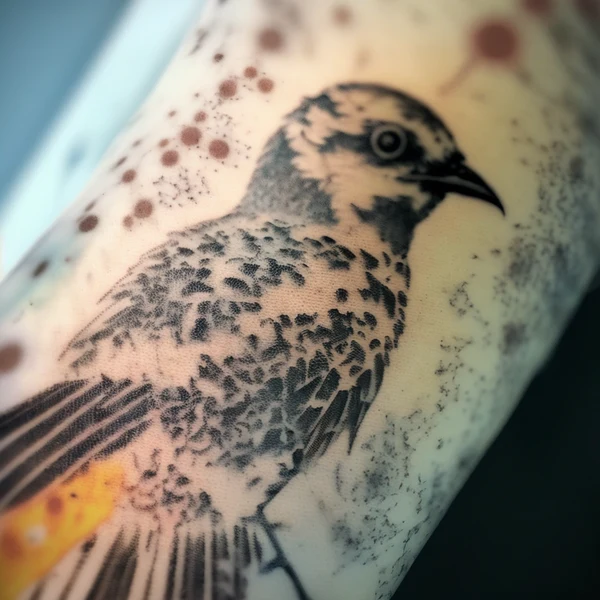Getting a new tattoo is an exciting and artistic way to express oneself, but the journey doesn’t end at the tattoo studio. The post-tattoo healing process is a critical phase that requires attention and care. One common occurrence during this period is tattoo scabbing, a natural part of the skin’s healing mechanism. Understanding the intricacies of tattoo scabbing is essential for ensuring a successful healing process and preserving the vibrancy of your new ink.
Read more about Revolutionize Your Look with Neck Tattoos
Contents
The Healing Stages
Tattoo healing typically occurs in several stages, with each phase playing a crucial role in the overall recovery process. Immediately after getting a tattoo, the skin experiences redness and mild swelling. In the following days, the tattooed area forms a protective layer of plasma, blood, and lymphatic fluids. As the healing progresses, scabbing may occur as the skin naturally repairs itself.
The Role of Tattoo Scabbing
Scabbing is a natural response of the body to the trauma inflicted during the tattooing process. It is a protective mechanism that seals the wounded area, preventing infections and promoting optimal healing. However, it’s important to note that not all tattoos will experience scabbing, and the intensity of scabbing can vary based on factors such as tattoo size, placement, and individual skin type.

Dos and Don’ts
- Do Keep It Clean: Gently clean your tattoo with mild, fragrance-free soap and water. Pat it dry with a clean, soft cloth, avoiding any aggressive rubbing.
- Do Moisturize: Apply a thin layer of fragrance-free, alcohol-free moisturizer to keep the tattooed area hydrated. Dry skin can contribute to excessive scabbing and potential complications.
- Do Avoid Scratching: Itchy sensations are common during the healing process, but scratching can disrupt the formation of scabs and lead to color loss or scarring. Instead, gently pat or tap the itchy area.
- Don’t Pick at Scabs: Allow the scabs to naturally slough off. Picking at scabs can result in scarring and pigment loss, jeopardizing the overall appearance of the tattoo.
- Don’t Submerge in Water: Avoid prolonged exposure to water, especially in swimming pools, hot tubs, or saunas, during the initial healing phase. Submersion can soften scabs and increase the risk of infection.
Potential Complications
Excessive scabbing, severe redness, or signs of infection such as increased pain, swelling, or discharge warrant immediate attention from a professional. While scabbing is a normal part of the healing process, complications should not be ignored, as they may indicate issues that require prompt intervention.
Conclusion
Tattoo scabbing, though often intimidating, is a natural part of the body’s healing process after getting inked. Proper care and attention during the healing stages play a pivotal role in preserving the quality and vibrancy of your tattoo. By following the dos and don’ts of tattoo aftercare and recognizing potential complications, you can navigate the healing process with confidence, ensuring that your new tattoo becomes a lasting and beautiful part of your personal expression.



